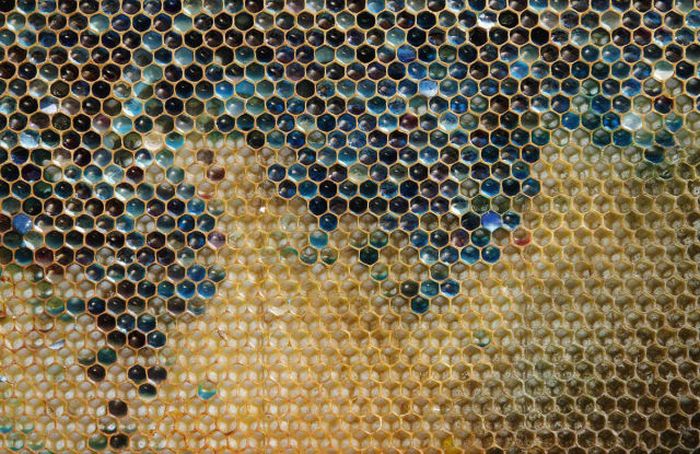|
|
Bees Make A Different Honey, France
|
Visiting flowers can be a dangerous occupation. Many assassin bugs and crab spiders hide in flowers to capture unwary bees. Other bees are lost to birds in flight. Insecticides used on blooming plants kill many bees, both by direct poisoning and by contamination of their food supply. A honey bee queen may lay 2000 eggs per day during spring buildup, but she also must lay 1000 to 1500 eggs per day during the foraging season, mostly to replace daily casualties, most of which are workers dying of old age. Among solitary and primitively social bees, however, lifetime reproduction is among the lowest of all insects, as it is common for females of such species to produce fewer than 25 offspring.
The population value of bees depends partly on the individual efficiency of the bees, but also on the population itself. Thus while bumblebees have been found to be about ten times more efficient pollinators on cucurbits, the total efficiency of a colony of honey bees is much greater due to greater numbers. Likewise during early spring orchard blossoms, bumblebee populations are limited to only a few queens, and thus are not significant pollinators of early fruit.
• Pollinator decline
From 1972 to 2006, there was a dramatic reduction in the number of feral honey bees in the US, which are now almost absent. At the same time there was a significant though somewhat gradual decline in the number of colonies maintained by beekeepers. This decline includes the cumulative losses from all factors, such as urbanization, pesticide use, tracheal and Varroa mites, and commercial beekeepers' retiring and going out of business. However, in late 2006 and early 2007 the rate of attrition reached new proportions, and the term colony collapse disorder was coined to describe the sudden disappearances. After several years of research and concern, a team of scientists headed by Jerry Bromenshenk published a paper in October 2010 saying that a new DNA-based virus, invertebrate iridescent virus or IIV6, and the fungus Nosema ceranae were found in every killed colony the group studied. In their study they found that neither agent alone seemed deadly, but a combination of the virus and Nosema ceraneae was always 100% fatal. Bromenshenk said it is not yet clear whether one condition weakens the bees enough to be finished off by the second, or whether they somehow compound the other’s destructive power. "They're co-factors, that’s all we can say at the moment. They’re both present in all these collapsed colonies." Investigations into the phenomenon had occurred amidst great concern over the nature and extent of the losses. In 2009 some reports from the US suggested that 1/3 of the honey bee colonies did not survive the winter, though normal winter losses are known to be around 25%.At the end of May 2012, the Swiss government reported that about half of the bee population had not survived the winter. The main cause of the decline was thought to be the parasite varroa.
|
|









